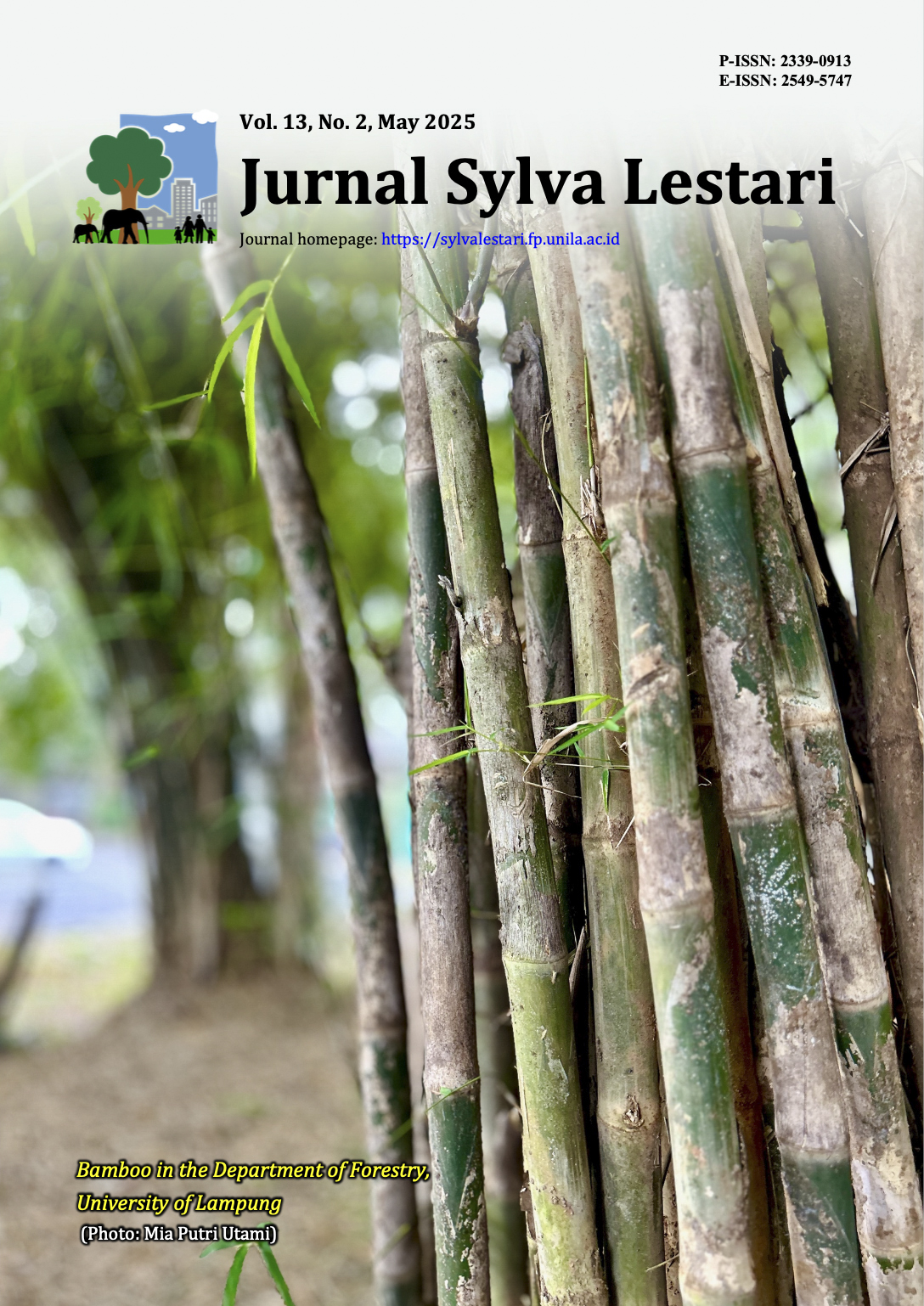Assessing Water Absorption and Root-Shoot Dynamics of Native Philippine Tree Species for Flood Mitigation and Environmental Management
DOI:
https://doi.org/10.23960/jsl.v13i2.1088Abstract
Over the years, excessive stormwater run-off has been a primary environmental concern in almost every part of the world. This study aimed to assess the water absorption capacity and root-shoot ratio of the three native species, namely Vitex parviflora, Pterocarpus indicus, and Diospyrus discolor, in the Philippines. The study used an experimental design with a total number of 63 experimental seedlings. After over a month of transplanting, the researchers collected the data by uprooting 1 sample per box and recording its weight. The uprooted samples were then submerged into a container with enough water, and the plant waited until it absorbed enough water before being weighed again. Root and shoot ratio were also computed using its dry weight. The results showed a significant difference in terms of absorption rate between the three native species. V. parviflora garnered the highest water absorption rate, followed by P. indicus and D. discolor. Root-shoot ratio was highest in D. discolor while lowest in V. parviflora. No significant correlation was found between root and shoot biomass regarding water absorption capacity. These findings highlight the importance of selecting specific tree species for environmental management and flood mitigation efforts in the Philippines.
Keywords: biomass, native species, stormwater run-off, water absorption
Downloads
Downloads
Published
How to Cite
Issue
Section
Statistics
 Abstract views: 484 times
Abstract views: 484 times PDF downloaded: 418 times
PDF downloaded: 418 times
Metrics
License
Copyright (c) 2025 Shiella Lynn Dali-on Goyo, Victor Lobrigas Corbita, Glendel Cotejo Acog, Diana Rose Balaba, Jessa Joy Tomoc Estrada, Joel Andig Mercado

This work is licensed under a Creative Commons Attribution-NonCommercial 4.0 International License.
Authors retain copyright and grant the journal right of first publication with the work simultaneously licensed under a Creative Commons Attribution-NonCommercial 4.0 Licence that allows others to share the work with an acknowledgement of the work's authorship and initial publication in this journal.
Authors are able to enter into separate, additional contractual arrangements for the non-exclusive distribution of the journal's published version of the work (e.g., post it to an institutional repository or publish it in a book), with an acknowledgement of its initial publication in this journal.
Authors are permitted and encouraged to post their work online (e.g., in institutional repositories or on their website) prior to and during the submission process, as it can lead to productive exchanges, as well as earlier and greater citation of published work (See The Effect of Open Access).









